 | | | Collecting and preserving meteorites since 1998. |
| |
|  |
|
|
The Carancas meteorite violently exploded when it made landfall just south of Lake Titicaca on September 15, 2007. It is one of three historically witnessed crater-forming events along with Sikhote-Alin and Sterlitamak; of the three, Carancas is the only stony meteorite.
I obtained the following photographs from a public German forum; based on the content of some of the photos, I believe they were taken by T. Kenkmann, N. A. Artemieva, K Wunnemann, M. H. Poelchau, D. Elbeshausen, and/or H. Nunez del Prado. If anyone has a copyright issue with my using them, please let me know.
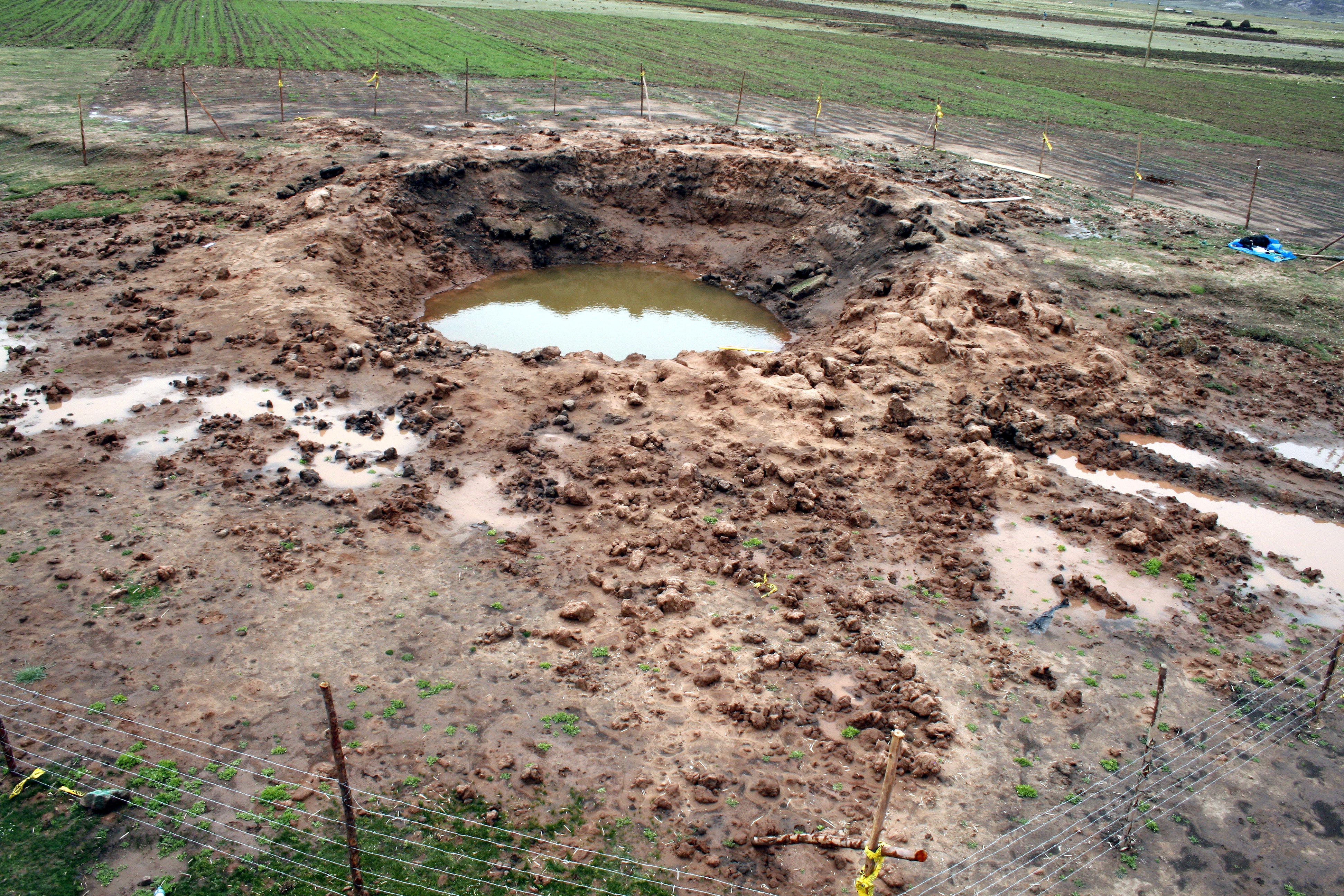
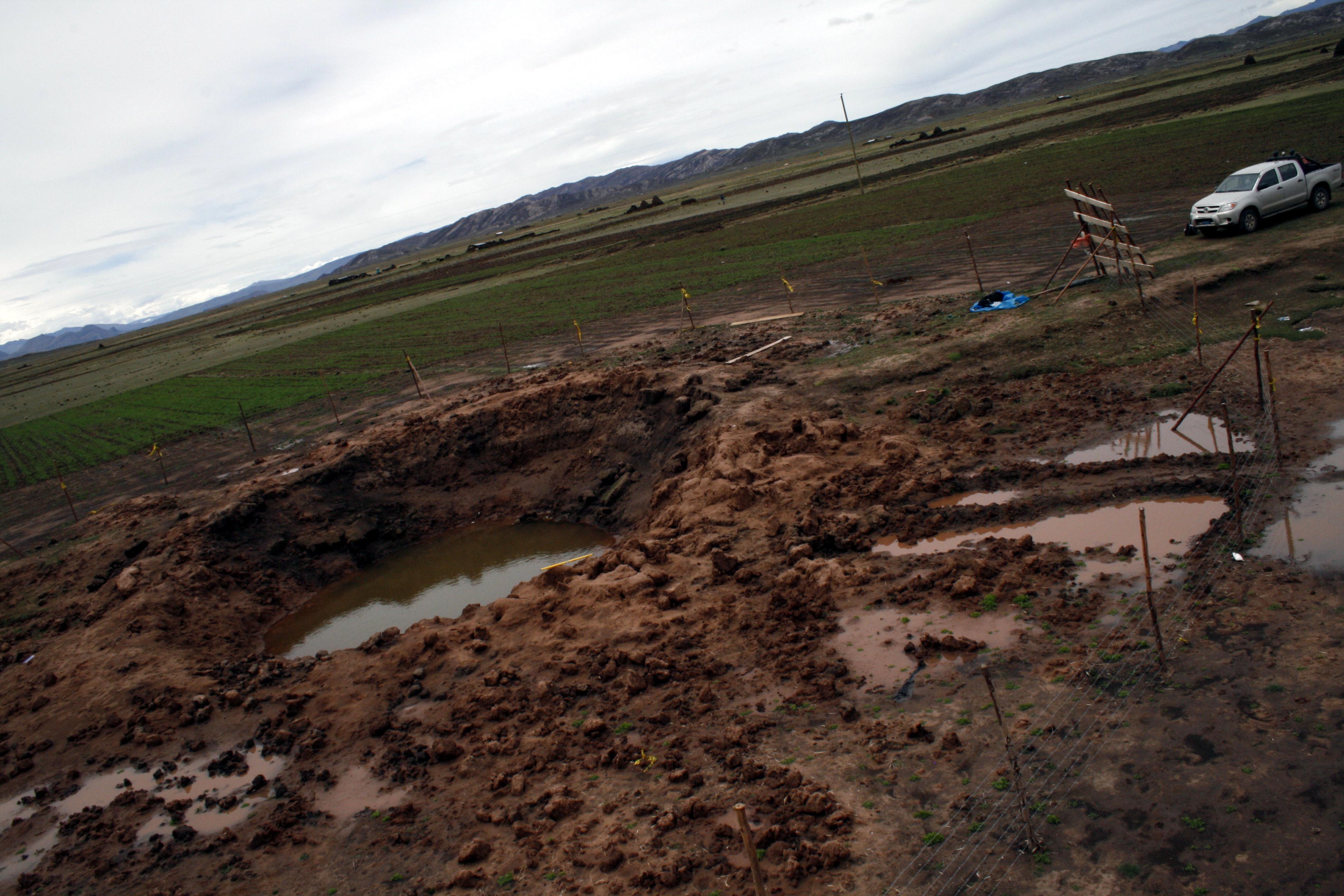
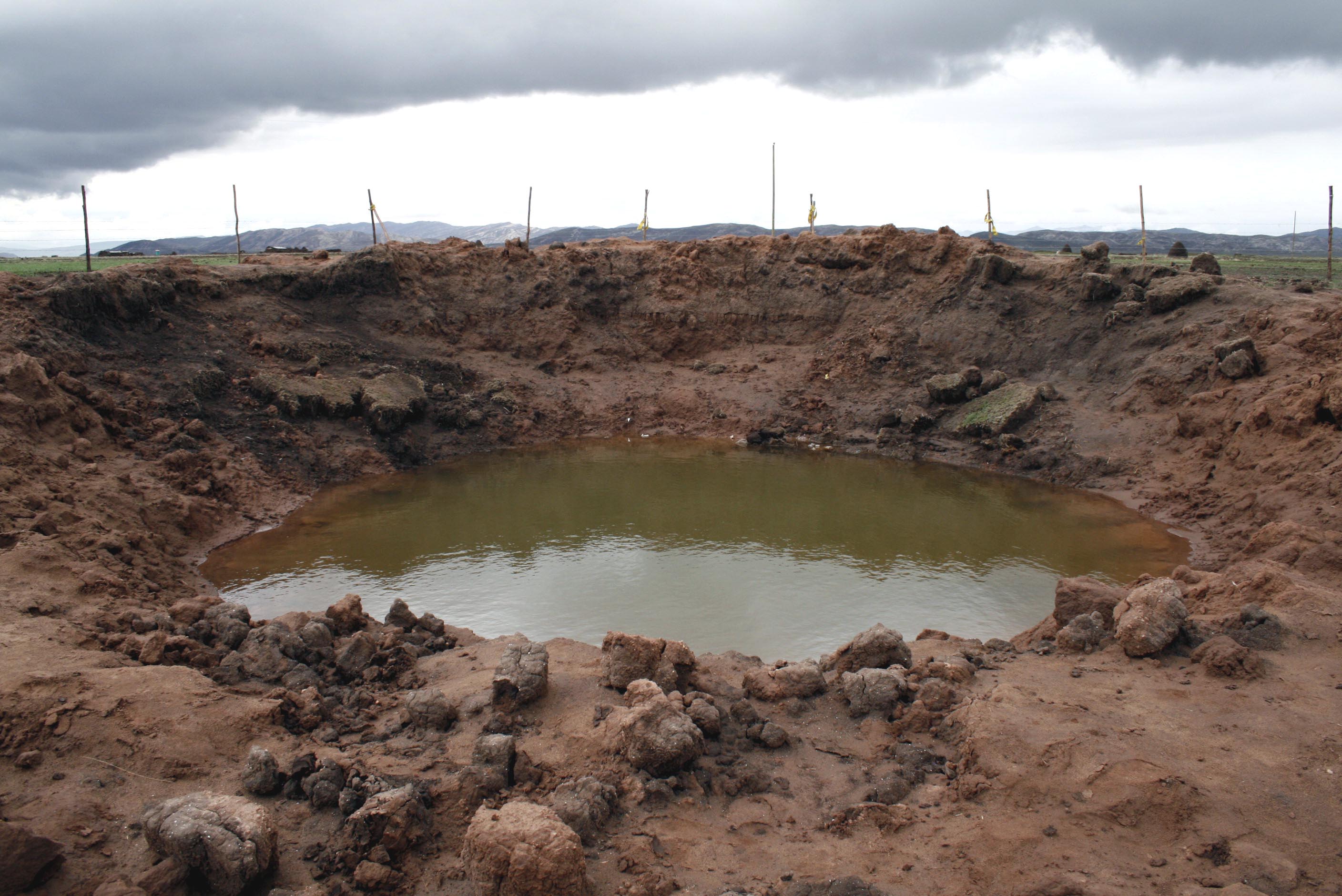
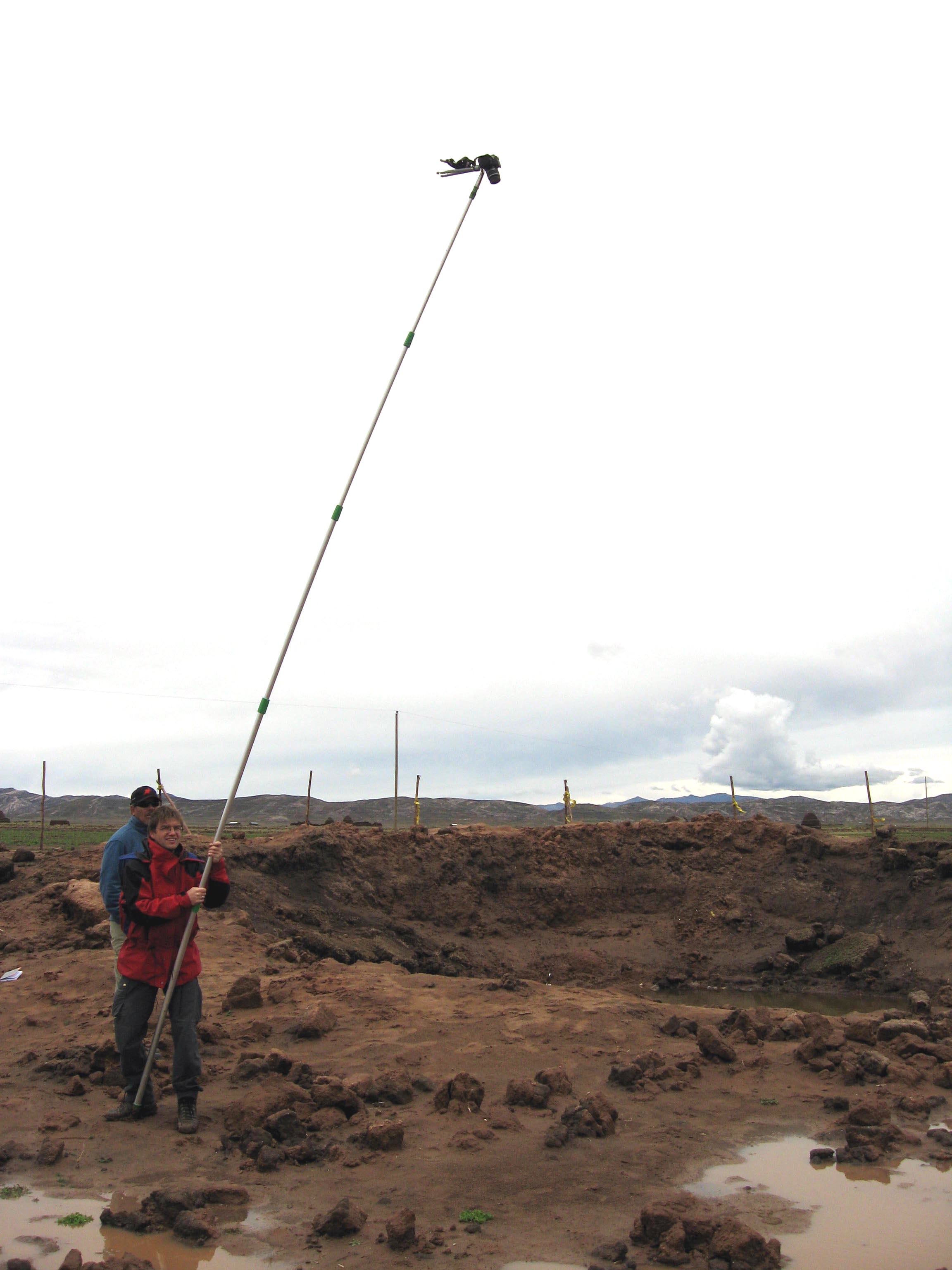
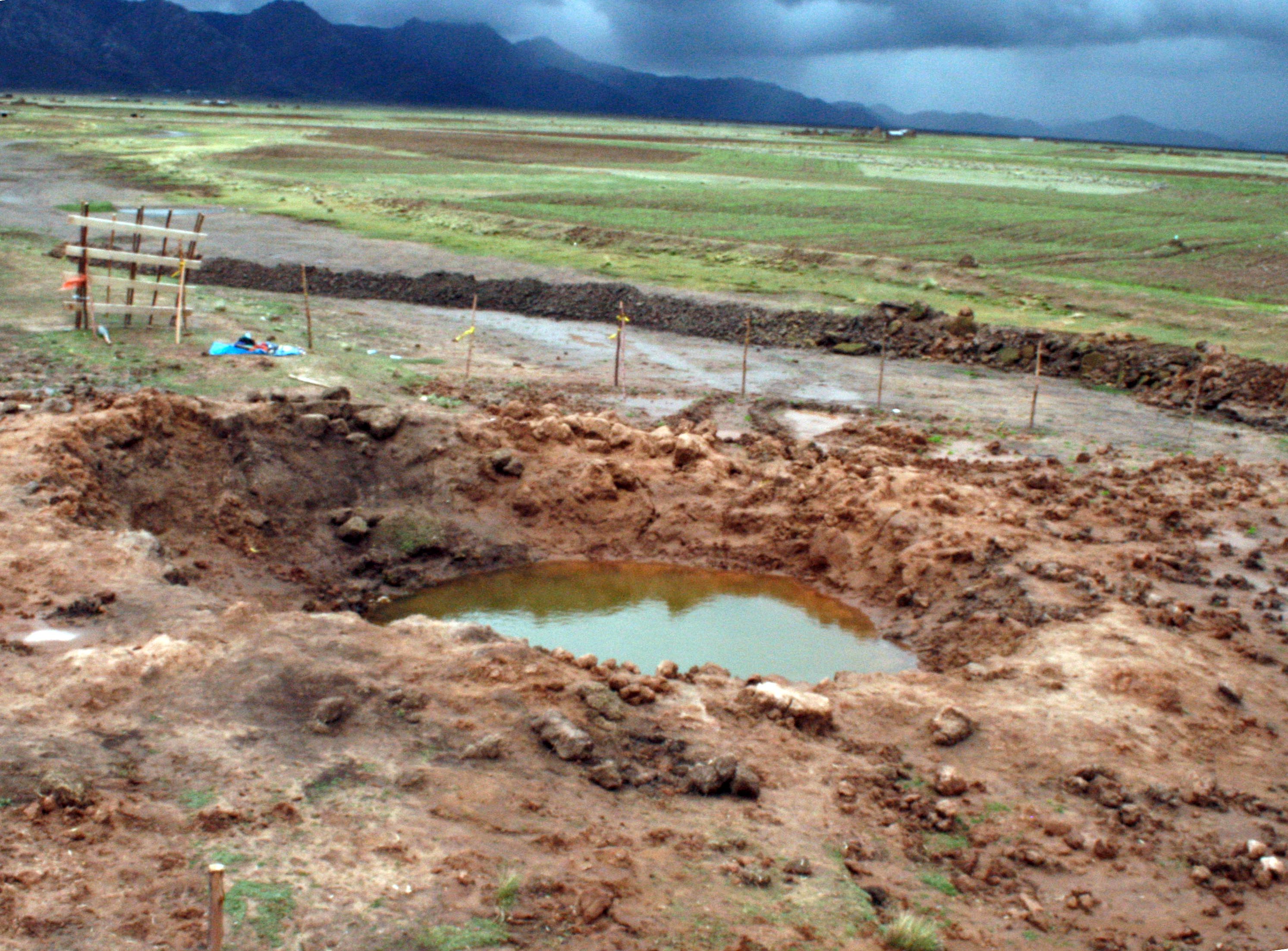
From MAPS Vol. 44, No. 7. (I'd consider getting a subscription if you don't already have one -- a lot of the papers are very technical, but there's always accessible information: see below.)
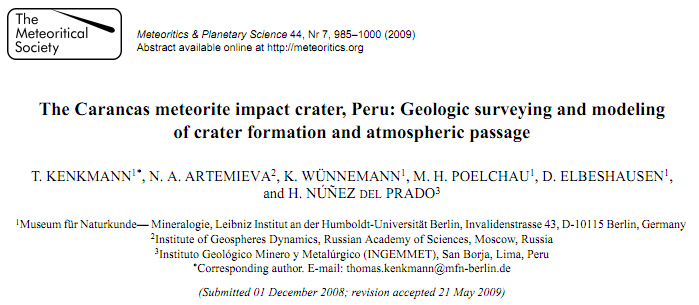
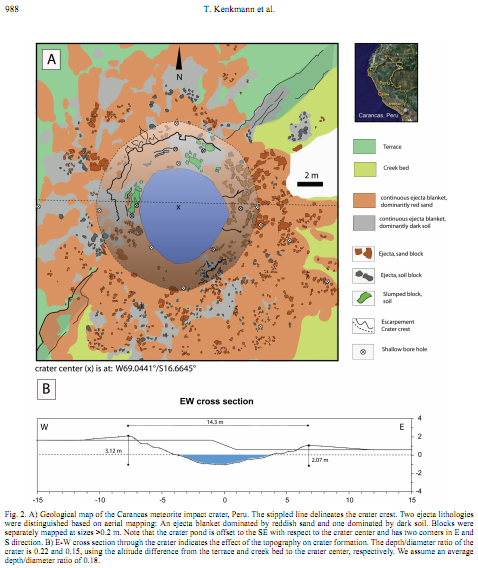 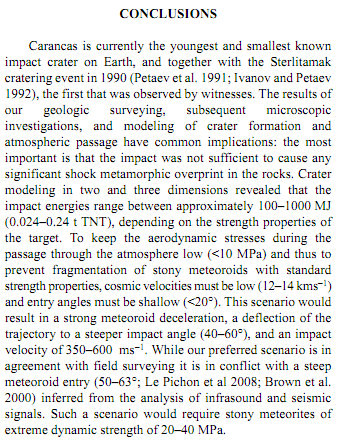
As a studying geologist, I would like to point out that the above paper is awesome. It's worth trying to get the back issue of MAPS if you're interested in such things.
I don't know what the total weight of the recovered fragments is, but, according to a variety of sources, it's somewhere between five and ten kilograms. To my knowledge, the biggest single piece still intact currently weighs ~345 grams, but the majority of the material was recovered with magnets in the form of tiny fragments and dust.
These pieces come directly from a Bolivian mineral-dealer who visited the site shortly after the fall.
0.454 grams
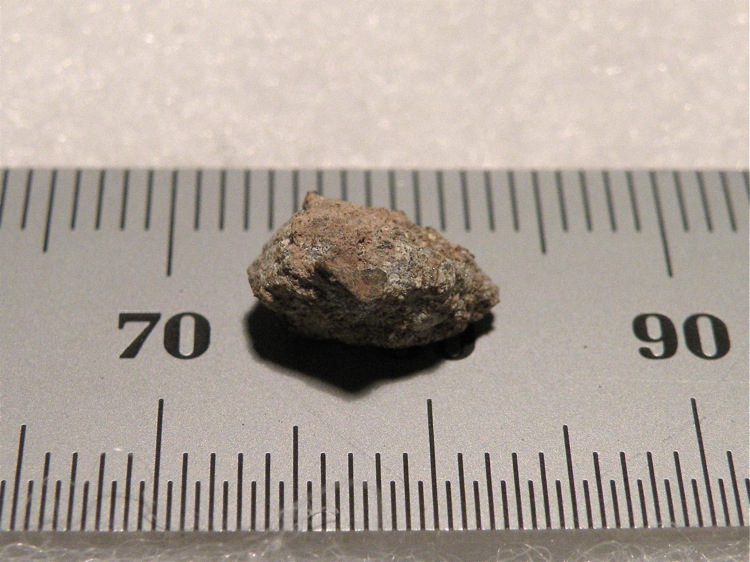
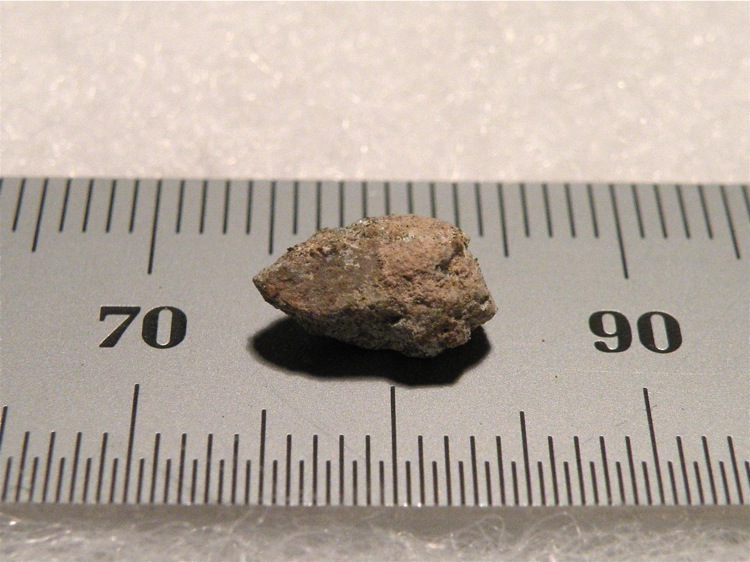
The above fragment is another fresh recovery replete with local soil and a few patches of black sheared surface.
$30
Send an Email
0.506 grams
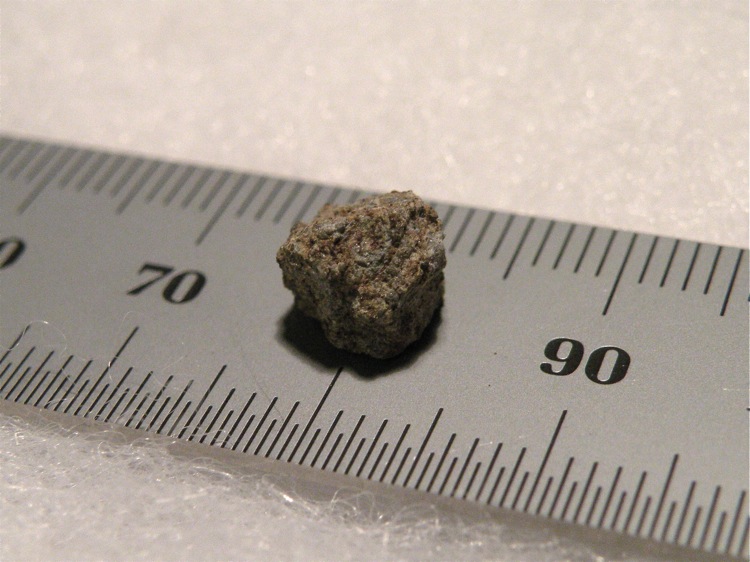
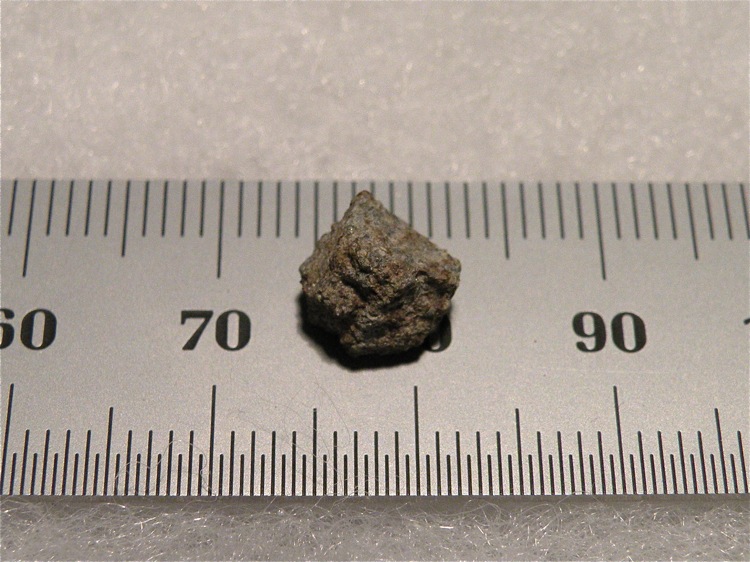
A fresh, blocky fragment with some great exposed chondrules.
$32
Send an Email
0.123 grams - sold
0.190 grams - sold
0.222 grams - sold
0.273 grams - sold
0.339 grams - sold
1.582 grams - sold
3.477 grams - sold
1http://download.naturkundemuseum-berlin.de/presse/meteoritenkrater/ |
| | |
|
